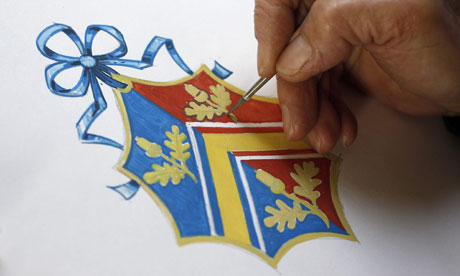Heraldry is an aspirational art: if you don’t have a coat of arms, you might like to think that some day you will be granted one, or that perhaps some long-forgotten ancestor indeed was. Michael Hancher suggests that this is one of the reasons that heraldic terms are illustrated so frequently in early (and even recent) dictionaries: being a gentle(wo)man involves understanding the arcane meanings of a blazon (or even what a blazon is).
So the forthcoming royal wedding makes even the Guardian anxious to inform us of the exact meaning of Kate Middleton’s new armature (she won’t be fully armed till she’s married, if you see what I mean). The explanation brings in another English obsession, punning. But it also usefully reminds us how we've got our colour–gender assignment twisted over the years. Middleton’s lozenge is suspended from blue ribbons as a sign that she is an unmarried daughter: blue for a girl, perhaps because of the traditional association with the Virgin Mary, who is often depicted wearing a blue mantle.
Hancher, M. 1996. ‘[The Century Dictionary:] Illustrations,’ Dictionaries, 17: 79–115.
—— 1998. ‘Gazing at the Imperial Dictionary,’ Book History, 1: 156–81.
